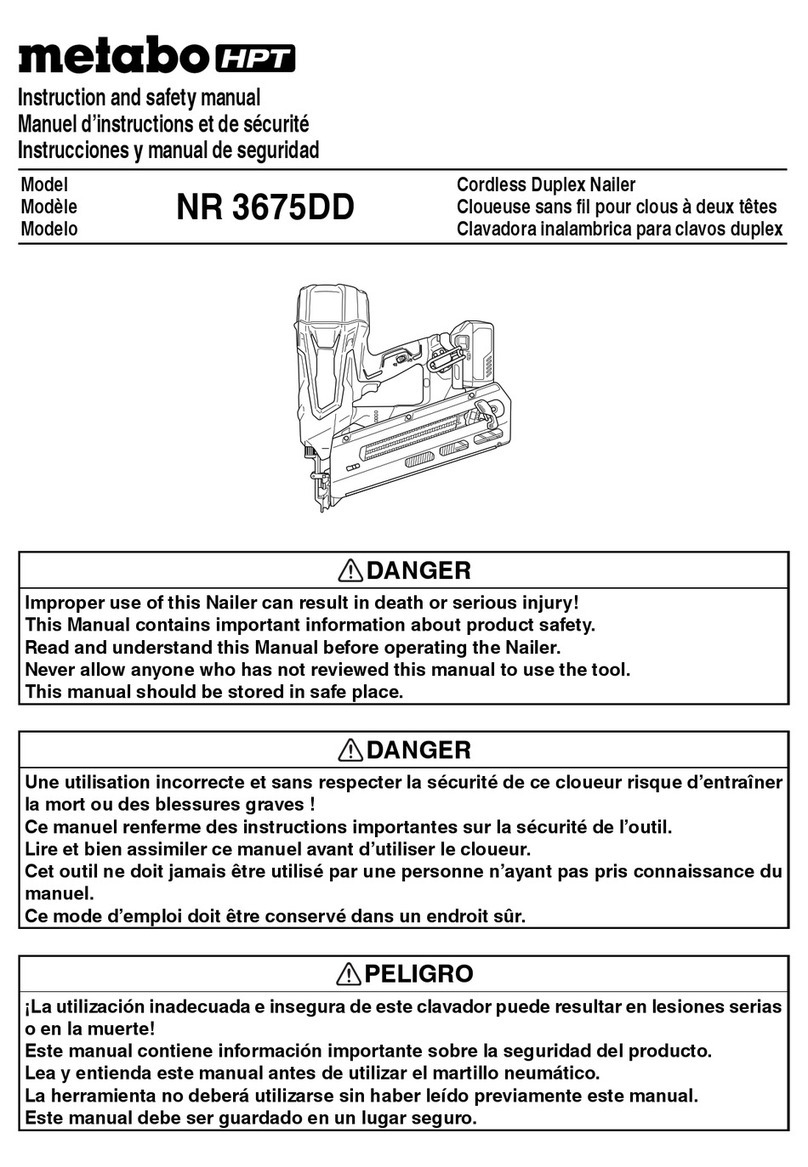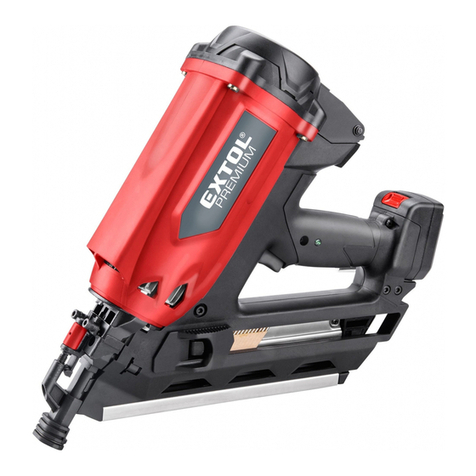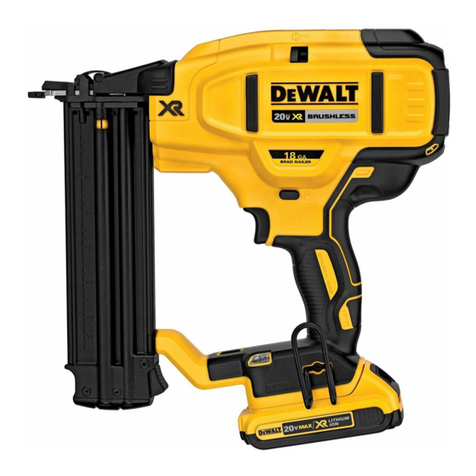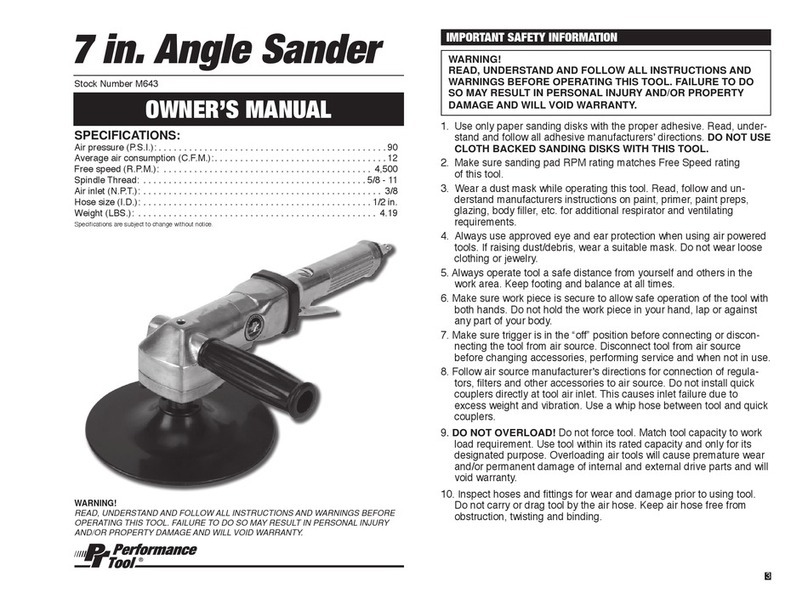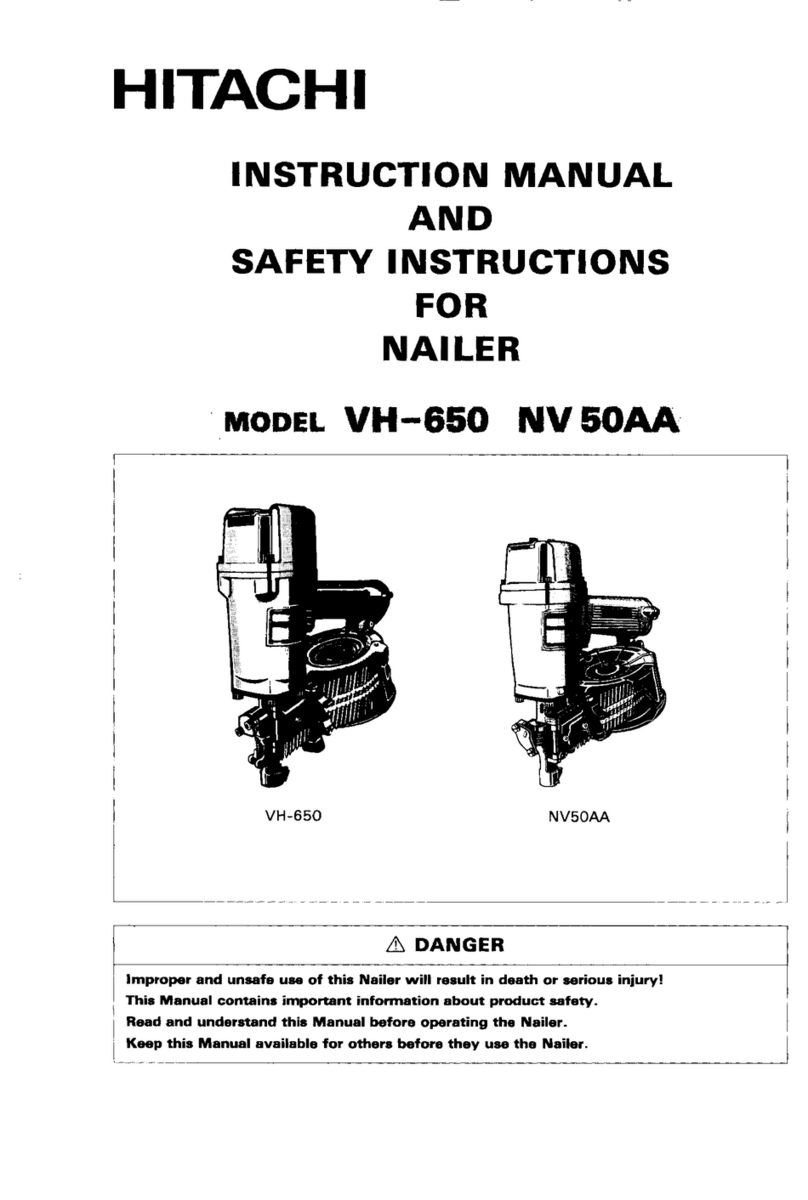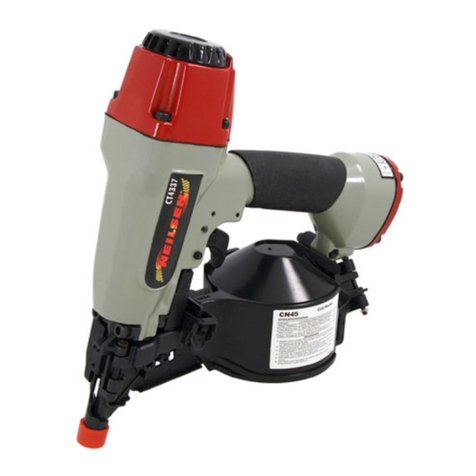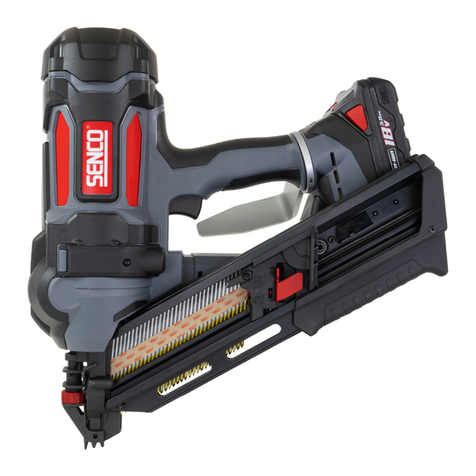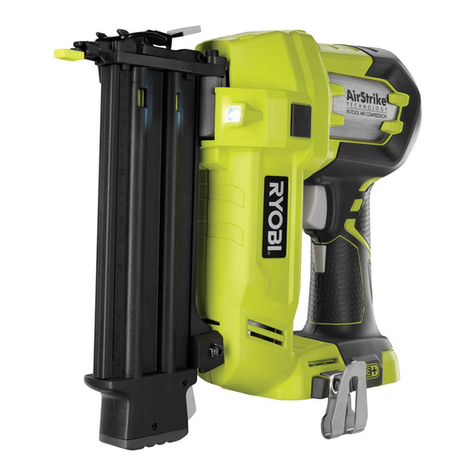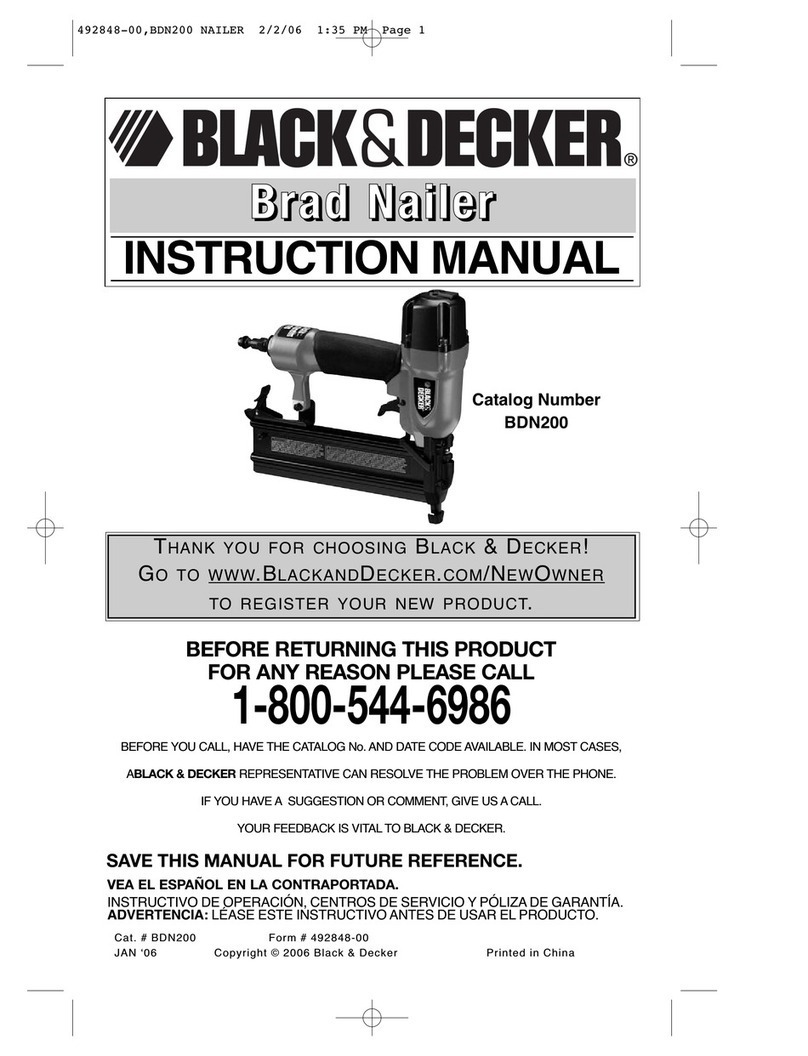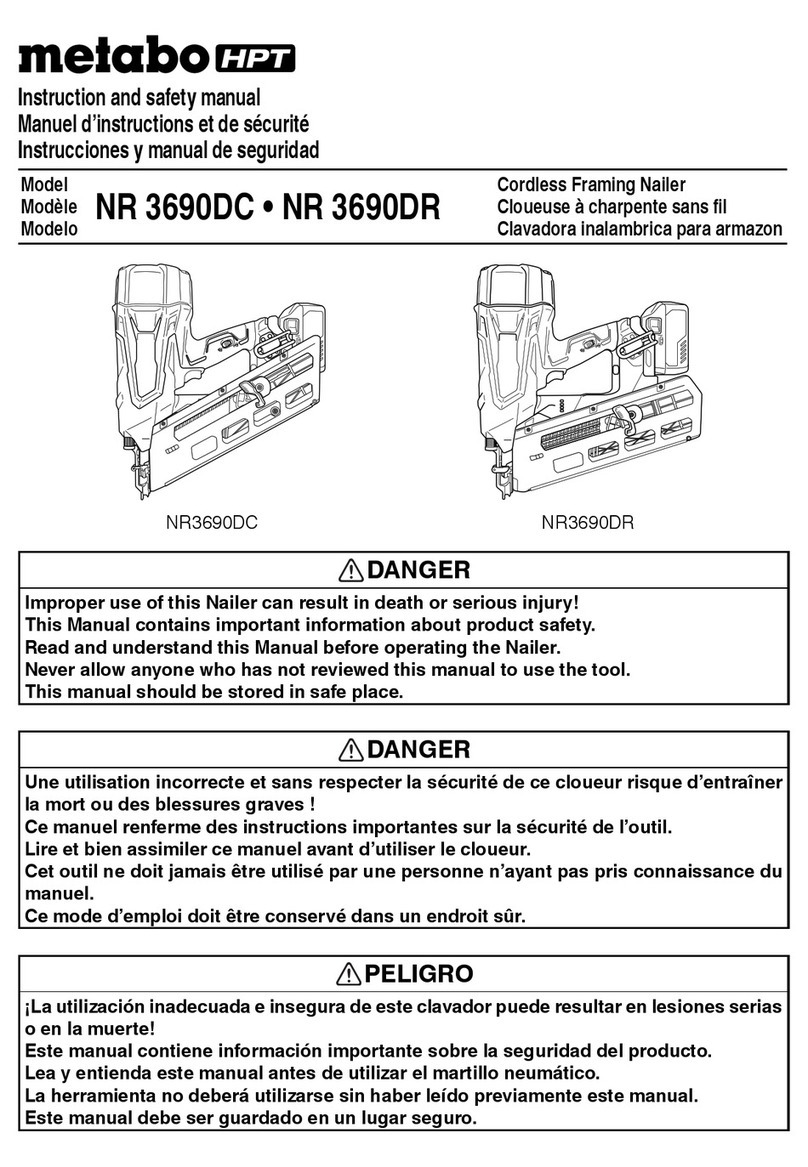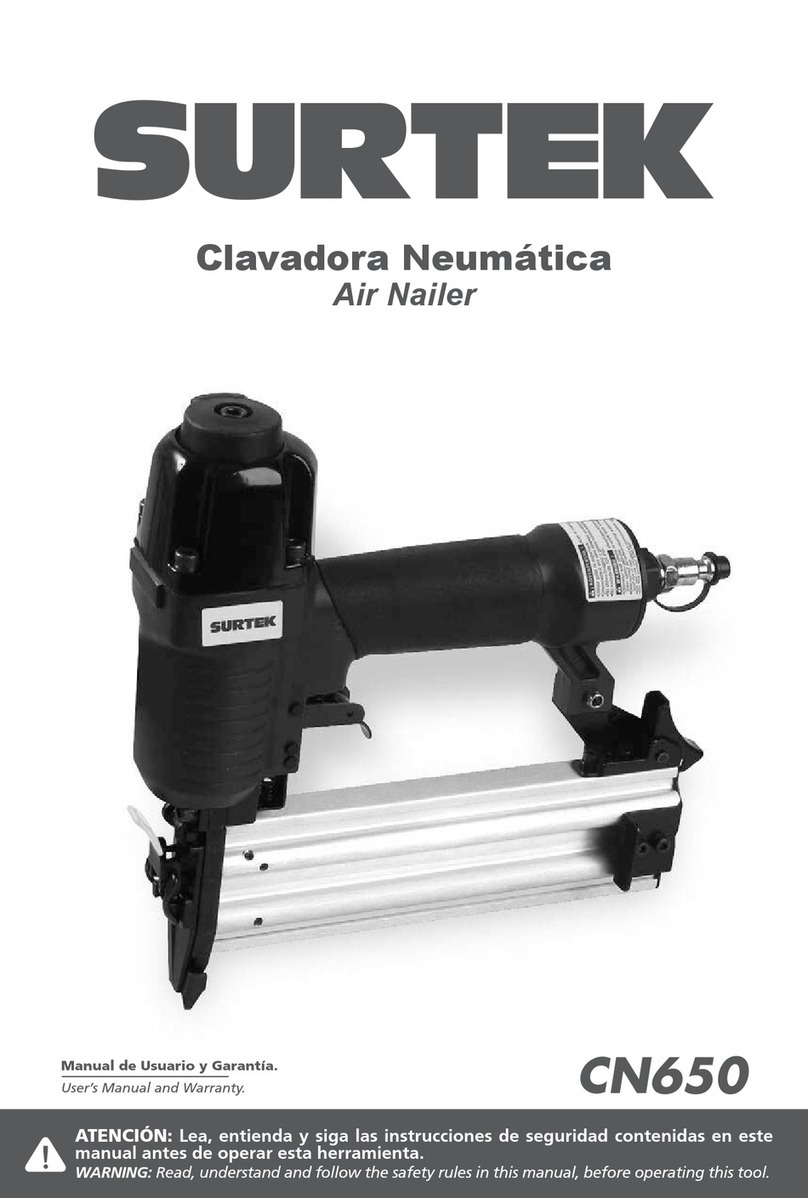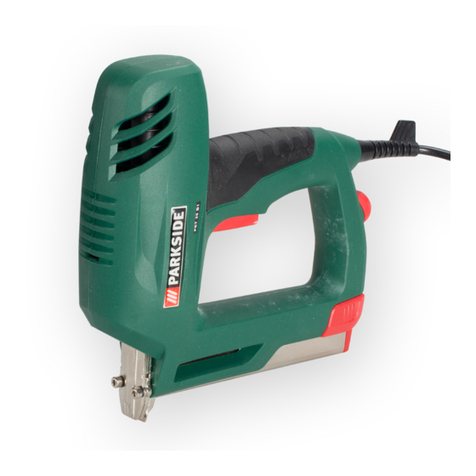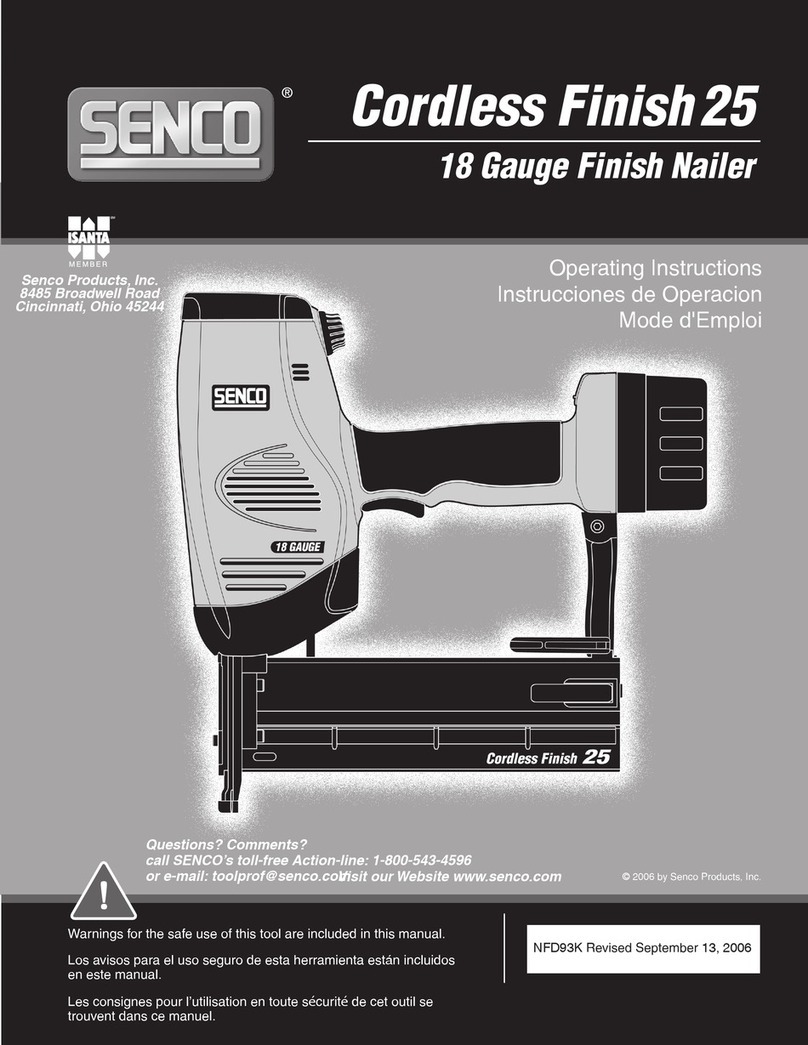
Nail type: 50-90mm long, 2.87-3.8mm diameter,
Warning: Wear approved safety glasses and ear defenders.
2. IMPORTANT SAFETY INFORMATION
a). Read the instruction manual fully. Do not attempt any operation until you have
read and understood this manual.
b). Most important you must know how to safety start and stop this machine,
especially in an emergency.
c). Keep the work area tidy and clean.
d). Keep bystanders away. Especially for children. All onlookers and passersby
must be restricted from entering the work area for their own protection.
e). Use safety glasses and ear protection, the tool operator and all person in the
work area must permanently operate to prevent some foreign mattes strafe into
eyes. Maybe the noise would harm your hearing, wear the ear protection to
f). Protective gloves and non-skid foot wear is recommended.
g). Never wear loose clothing or jewelry as they can be caught in moving parts.
h). Never use oxygen, combustible or any other bottle gas as a power source or
would cause explosion and serious personal injury.
i). Only connect tool to air supply with a coupling that will release all pressure
from the tool when disconnected.
j). Disconnect tool from air supply before finishing operation or performing
k). Do not operate the tool if under the influence of alcohol or drugs.
l). Do not aim the tool at anyone in case of danger while you are operating it and
do not remain any fasteners in the channel when you finish your work.
m). Do not soak tool with cleaning solution. Such solutions can damage internal
n). Do not place your hand or any part of your body in the fastener discharge are
of the tool when connecting or disconnecting air supply.
o). Do not carry shoot the tool into open space as this may result in injury.
p). Disconnect and house all power tools that are not in use.
q). Do not overload or misuse the tool. All tools are designed for a purpose and
are limited to what they are capable of doing. Overloading a tool will result in tool
r). Maintain your tools correctly. A well maintained tool will do the job safely.
Replace any damaged or missing parts immediately with original parts from the
